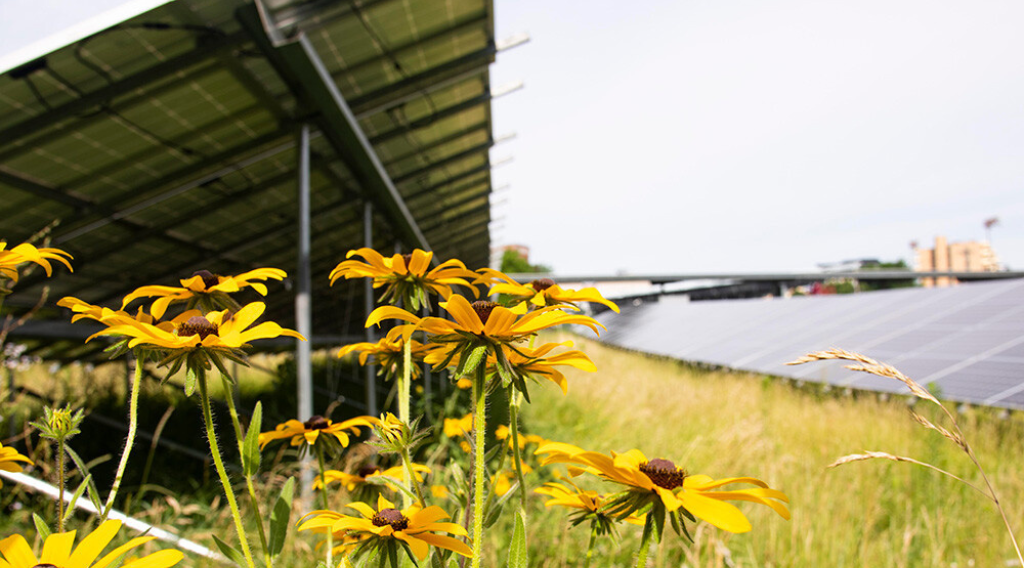 Communities across the country can benefit from identifying and prioritizing synergies between energy goals outlined at multiple levels of government — across cities, counties, and the state level.
Communities across the country can benefit from identifying and prioritizing synergies between energy goals outlined at multiple levels of government — across cities, counties, and the state level.
Minnesota’s Washington County is setting an example of the power of these types of partnerships through intentional collaboration with cities located in the county. Together, these communities can work toward putting a dent in Minnesota’s fast-approaching goal to reduce greenhouse gas emissions (GHGs) 30 percent by 2025, which will require GHG emissions reductions across city, county, and sector lines. As this example shows, it is becoming increasingly apparent that communities can benefit from cooperation toward common energy goals.
The county recently adopted an energy plan that sets targets for county operations and county-wide emissions reductions, rooted in the state’s 2025 goal. Building off past success in its operations, the county aims to further reduce emissions through efficiency, renewable energy, and travel strategies. These goals, if achieved, have the opportunity to significantly decrease GHG emissions, while also resulting in long-term cost savings to the county and its residents.
As further detailed in the plan, the county has already demonstrated a capacity to achieve emissions reductions that are in line with state goals. Between 2008 and 2016, county operations reduced overall emissions by 19 percent, exceeding the 2015 state goal of a 15 percent reduction. This was accomplished in part due to Xcel Energy’s electricity generation mix which results in lower GHGs, but also to deep efficiency measures and improved building operations.
Through its success, the county was able to demonstrate that these goals are not only achievable, but also result in significant cost savings. Energy reductions, through efficiency measures, resulted in a net savings of $2.4 million over the eight-year period.
Role of Community Collaboration in Planning Efforts
Central to the process of both plan development and implementation is community collaboration. A dozen city sustainability leaders are situated within Washington County including cities like Cottage Grove, Woodbury, Oakdale, Mahtomedi, and parts of White Bear Lake. All of these cities participate in Minnesota’s GreenStep Cities program, through which they have reported successful implementation of their own energy efficiency and renewable resource actions. These GreenStep Cities participants, which together account for approximately 75 percent of the county’s total population, were identified as a great place to build a network for city-county collaboration.
 Many of the cities have incorporated climate and/or energy into their comprehensive plans. The City of Oakdale, for example, has included a goal to support the state’s emissions reductions goals and increase resiliency. Before completing its draft comprehensive plan, the City of Woodbury had already met its draft goal to offset 60 percent of its city operations electricity use from renewable sources; it has since revised it to be 100 percent. These are just a handful of examples of what communities within Washington County are already doing and showcase opportunities for collaboration with the county where goals and vision overlap across jurisdictions.
Many of the cities have incorporated climate and/or energy into their comprehensive plans. The City of Oakdale, for example, has included a goal to support the state’s emissions reductions goals and increase resiliency. Before completing its draft comprehensive plan, the City of Woodbury had already met its draft goal to offset 60 percent of its city operations electricity use from renewable sources; it has since revised it to be 100 percent. These are just a handful of examples of what communities within Washington County are already doing and showcase opportunities for collaboration with the county where goals and vision overlap across jurisdictions.
The Washington County 2018 Energy Plan was drafted in consultation with many of these cities. Representatives of cities were convened to identify where energy goals and visions aligned and where collaboration could best leverage shared resources to achieve mutually beneficial success.
A notable outcome of this collaboration is the recommendation that the county convene a task force to facilitate on-going collaboration with its communities where they could share information, success, and identify opportunities to work together toward desired outcomes. It was revealed through these conversations that there exist pivotal touchpoints where cooperation and coordination between communities, especially cities and counties, are both beneficial and essential to achieving mutual energy goals beyond what local governments might achieve independently.
City-County Collaboration Paves the Way to Success
Without conversation and communication, the road to achieving emissions reductions outlined in Minnesota’s legislation may appear daunting to individual communities; by capitalizing on shared goals within cities and counties, it is possible to better leverage resources and connections to see a measurable impact. Through the 2018 Energy Plan, Washington County has demonstrated that city-county partnerships could become the standard for how communities implement energy/climate action to achieve emissions reductions.
State energy and GHG reduction goals are not specific to a community or locale—they span a state and the communities within. Setting the stage for deliberate collaboration continues to illustrate the strong leadership in Washington County, and can serve as an example platform for other counties and cities across the state and the country.
To read the Washington County 2018 Energy Plan, visit the Washington County web-page here, or copy this URL: https://www.co.washington.mn.us/2904/Energy-Planning
Jessi Wyatt is an intern at the Great Plains Institute.



